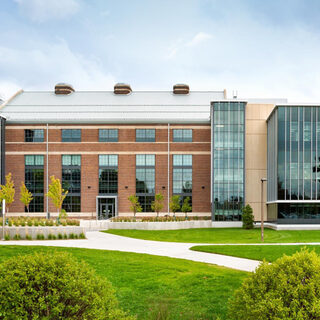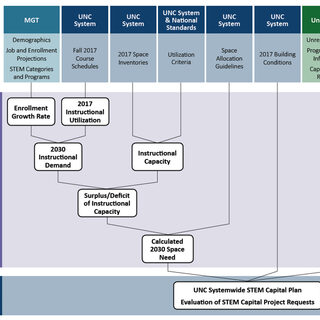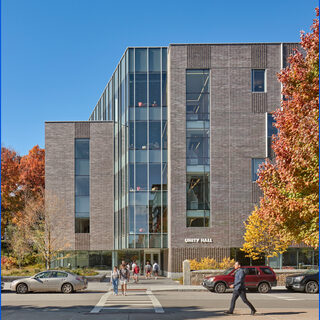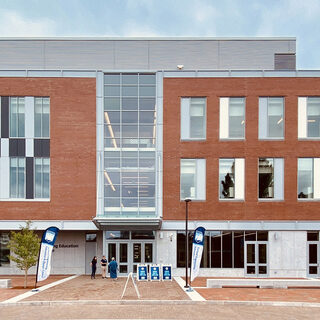Tradeline's industry reports are a must-read resource for those involved in facilities planning and management. Reports include management case studies, current and in-depth project profiles, and editorials on the latest facilities management issues.
Latest Reports
Flexible Design for Higher Education Science and Engineering Facilities
New teaching facilities for science and engineering stress flexibility and interdisciplinarity, but how much flexibility is appropriate? Michael Lauber, principal at Ellenzweig in Boston, cites three recent university-level projects at Michigan State University, University of Maine, and Rice University to demonstrate how to achieve varying levels of flexibility with lab infrastructure and casework, and how the floorplan can enable occupants to easily adapt their space to ever-changing pedagogical goals in multiple STEM disciplines.
Analyzing STEM Space Requirements in a Large University System
The North Carolina State Legislature often receives requests from its representatives for funding to construct new academic buildings at the state universities in their districts. Lately, it’s been all about STEM facilities. STEM (science, technology, engineering, and math) jobs are predicted to increase faster than other kinds of positions in the 2020s, so some requests represent a legitimate response to the need for STEM graduates. But which universities truly need more space? To help them allocate funding sensibly, the University of North Carolina System Office commissioned a statewide study, using an innovative methodology balancing current utilization, building conditions, and future space needs.
Unity Hall, Worcester Polytechnic Institute -- Project Profile
Unity Hall, Worcester Polytechnic Institute’s new five-story, 100,000-sf academic and research building, brings together faculty from robotics, data science, bioinformatics, and computational biology. Highlights of the $80 million building, which opened in January 2022, are the flexibility of the lab spaces, the varied and numerous collaboration zones and spaces, and the standardized size of faculty offices.
New Engineering Building Kicks Off University of Maine’s Extensive Master Plan
The $78 million, 108,000-sf Ferland Engineering Education and Design Center opened to students on Aug. 24, 2022, marking the University of Maine’s first step in a $600 million master facilities plan that aims to renovate or replace all engineering and computing buildings on the school’s main campus in Orono. The update of these facilities also aligns with the proposed Maine College of Engineering, Computing, and Information Science (MCECIS), a statewide initiative to equip Maine’s technical workforce with new teaching methods, curricula, and capital investments in infrastructure over the next 10 years, all aimed at addressing the current shortage of engineering and computing graduates.
Project Profile: Student Success District
The Student Success District is a ground-breaking addition to the University of Arizona’s urban fabric. The design strengthens connections between new and existing structures, activates underutilized spaces, and prioritizes the student experience. The complex project revitalizes the Main Library and the Bear Down Gymnasium, reorients the entry to the Albert B. Weaver Science-Engineering Library, and merges the buildings with a new 55,000-sf Center for Academic Success.





